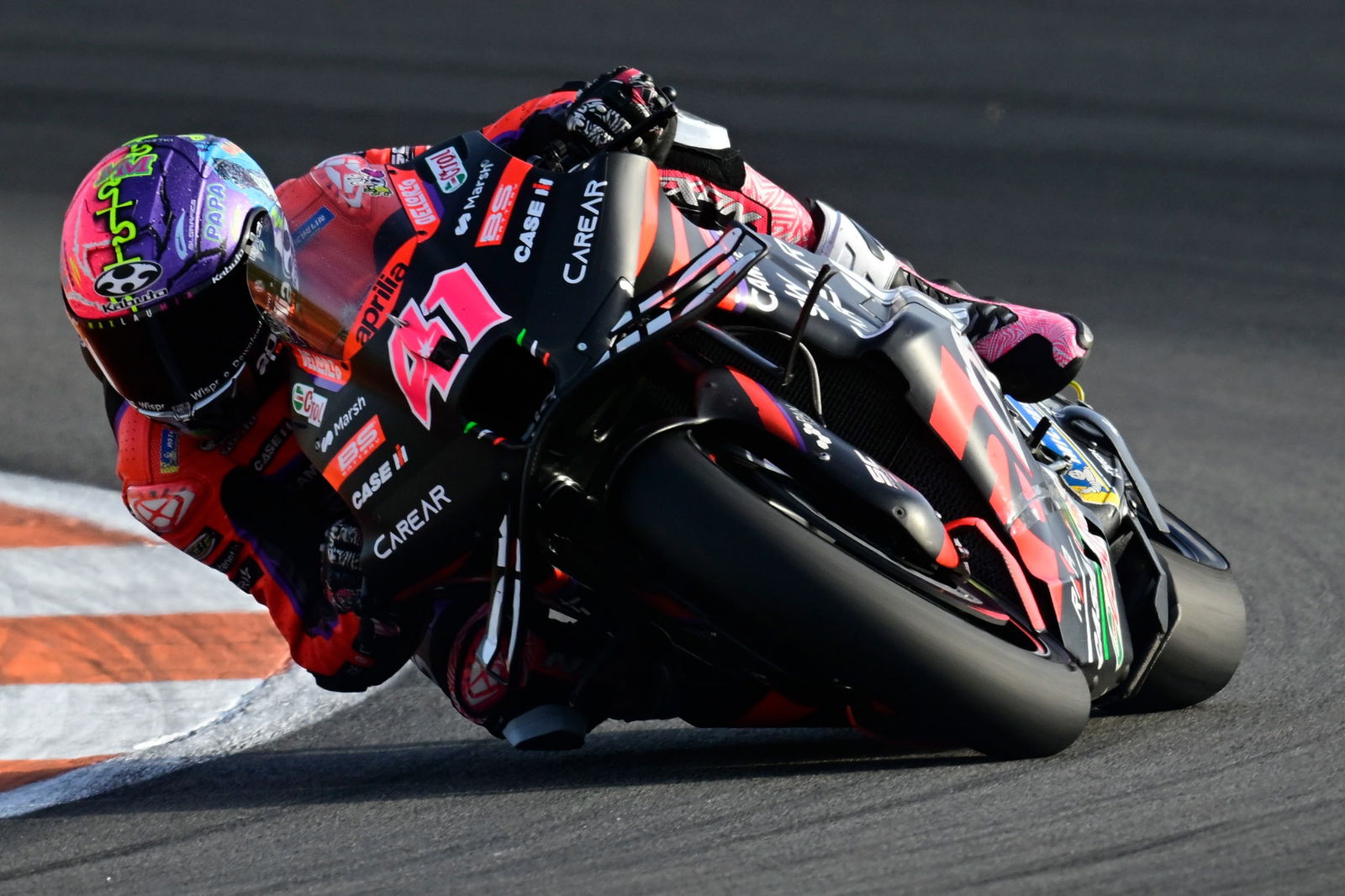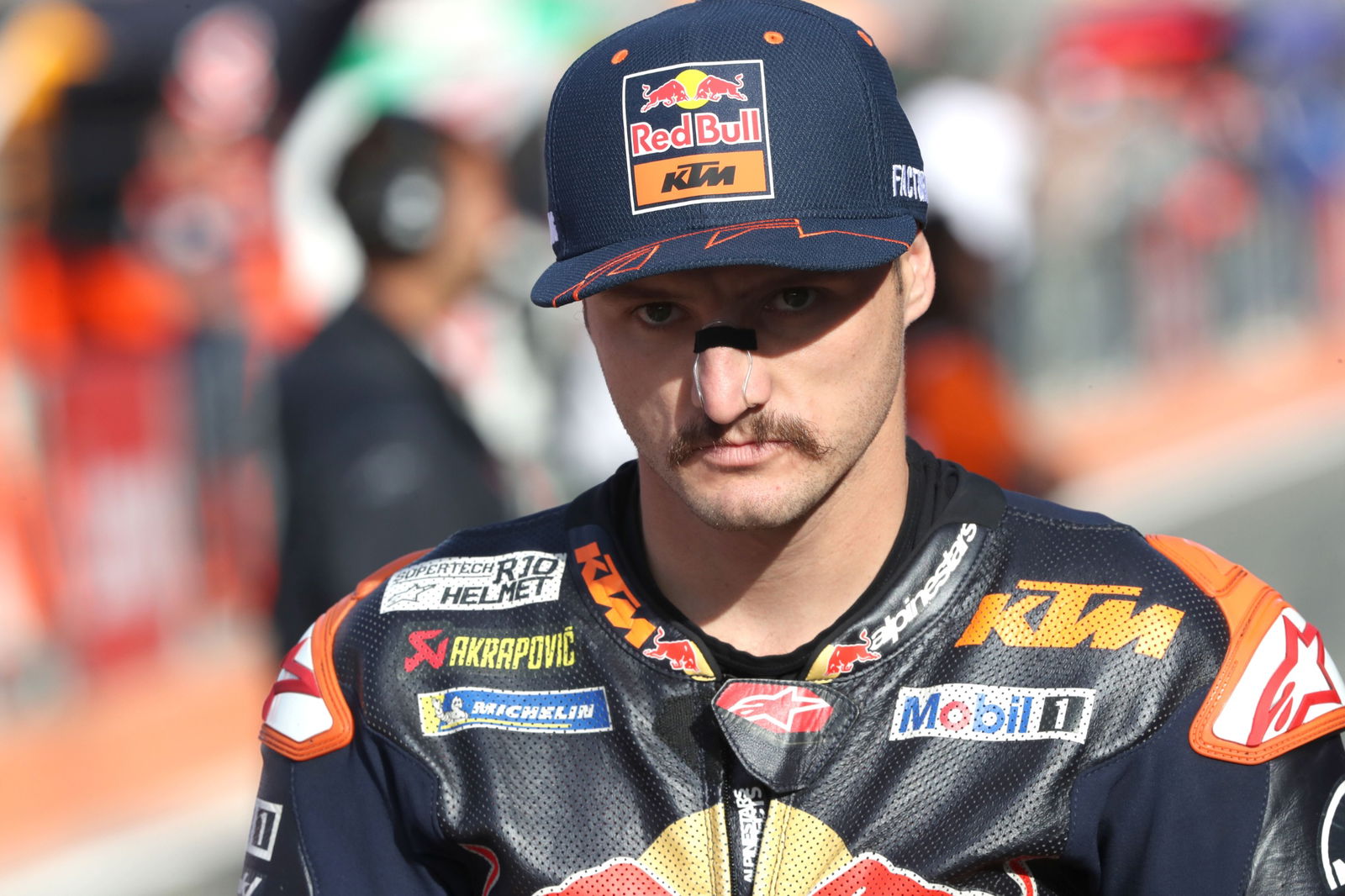Aprilia MotoGP front wing technology ‘of interest to a lot of people’, inspired by F1 ‘S-Duct’ system

Here are a few of the insights provided by Bonora...
Changing to a 90-degree V4 cylinder layout
“If we look back to 2020, the biggest advance has been the adoption of a 90° V4 [replacing the previous 72° angle]. 90 degrees has given the riders a lot more confidence. Because the bike has become more controllable.
“The wider opening between the cylinders has allowed us to lower the airbox. The rider also has a better position on the straights. It's also allowed us to get rid of the balancer [shaft] that was fitted to the previous V4, as a 90° V is naturally balanced.
“The engine is narrower, and so is the bike. With a smaller frontal area, top speed has increased.”
The aerodynamic era arrives
“2020 was the first bike of this new aerodynamic era... Then in 2021, we put a lot more downforce on the bike; you can see that the front wing [underwent] a major evolution.
“This was the result of extensive research into airflow around the front and rear tyres and in particular, we have improved the airflow under the fairing and along the rear tyre.”
Agility vs Aero
“In 2022, we solved the [agility] problem by reducing the size of the [front] spoiler. However, with its different shape, the 2022 wing was smaller but more effective. So we kept the same downforce while improving agility.”
Quizzed on the larger space present between the front wheel and fairing in recent seasons, Bonora confirmed it helps agility - when changing direction - “because there's less air resistance.”

Ground effect and F1-style ‘S-Ducts’
Under the leadership of technical director Romano Albesiano, who specialised in aerodynamics earlier in his career, Aprilia took its aero to another level in 2023 with the use of F1-style ‘S-Duct’ technology as well as further refinement of its ‘ground effect’ fairing.
‘S-Duct’ technology involves a small slot to draw in some of the unwanted turbulent (‘dirty’) air that has passed over a wing surface, then channelling it through the bodywork and releasing it in a targeted location downstream.
“We've worked on the efficiency of the [front] spoiler, but I can't tell you any more than that. Our inspiration comes from F1 and the ‘S-Duct’ system,” Bonora confirmed.
“It's of interest to a lot of people [from rival teams] in the pit lane, given the way they look at this part of our machine.
“In the fairing area, we also broke new ground at the Sachsenring in 2022, with this first version that was curved at the sides.”
The curved fairing sides are commonly labelled as 'ground effect', due to the higher air velocity/lower pressure area created between the side of the fairing and the track surface, which helps ‘suck’ the bike to the ground in a similar way to the carefully shaped floor of an F1 car.
“Yes, it's another idea from F1,” Bonora said. “But when you look at bikes in corners, you realise that it's easy to transpose [the concept].
“We were the first to use it in this way, after studying the shape of our fairing sides very precisely. We confirmed in the wind tunnel that it was effective in terms of downforce.”
Ride-height systems
“[Our] system is made at Aprilia. We produced a first version of the rear lowering system in 2021. We then went on to fine-tune the rear lowering unit several times to give the rider the confidence he needed to operate it.
“If [the rear] goes down too fast, it makes the bike unstable. If you do it when at a [lean] angle, you lose grip. So you have to set the right speed precisely, so that the rear tyre can cope with the change in position.”

360 km/h from a sofa ‘doesn't add anything to the show’
Whilst proud of the advanced technology that has transformed Aprilia into a race winner, Bonora concedes that lowering performance and improving overtaking are likely targets for future regulations.
“If you look at things as an engineer, you want to improve aerodynamics, stability and efficiency, even if it means making the machine even more complex.
“If you look at it from the point of view of the race, it's fair to say that we should slightly reduce the performance of the machines and simplify them.
“We no longer see overtaking like we did 20 years ago. Watching bikes going over 360 km/h in a straight line from your sofa doesn't add anything to the show.”


